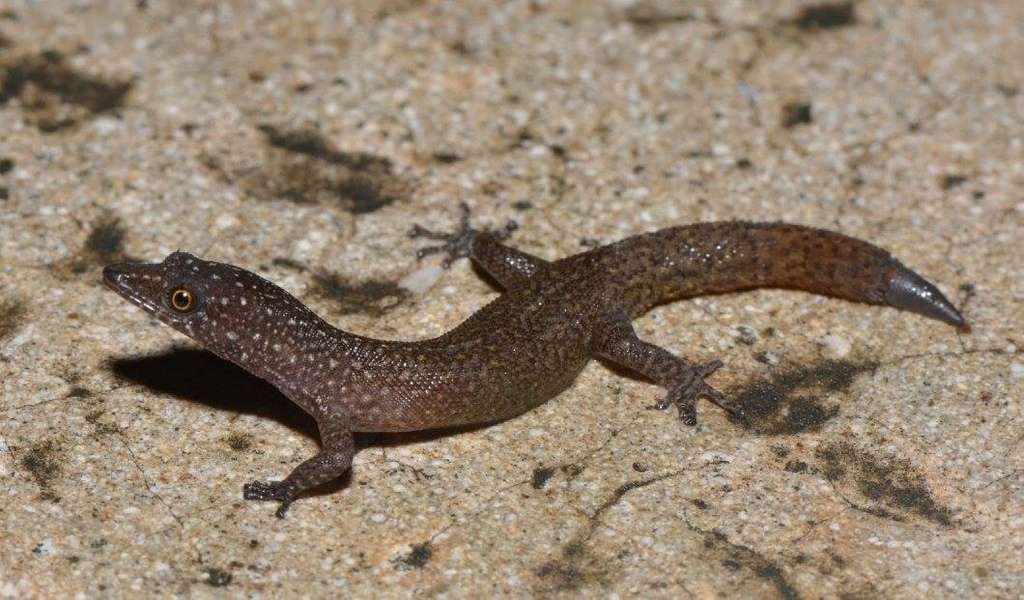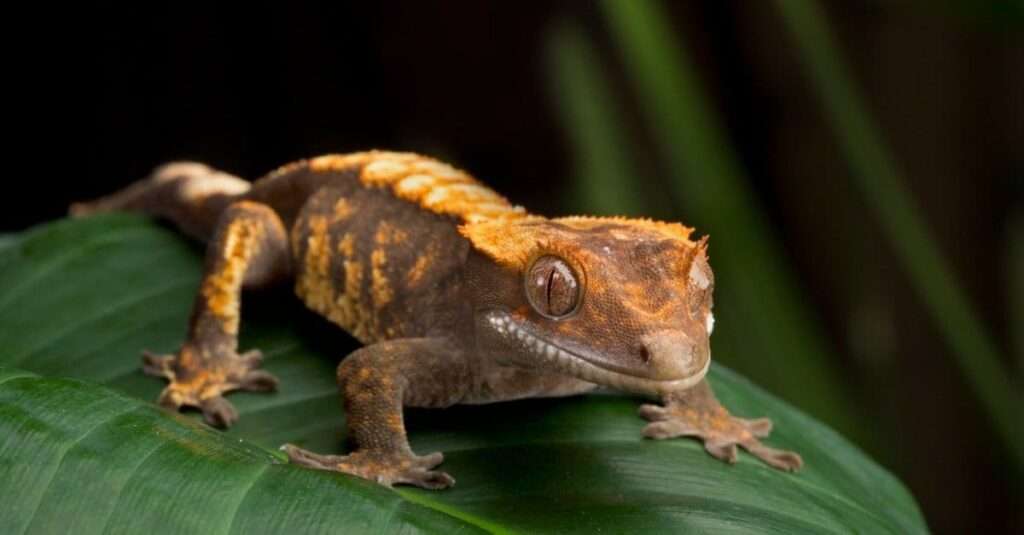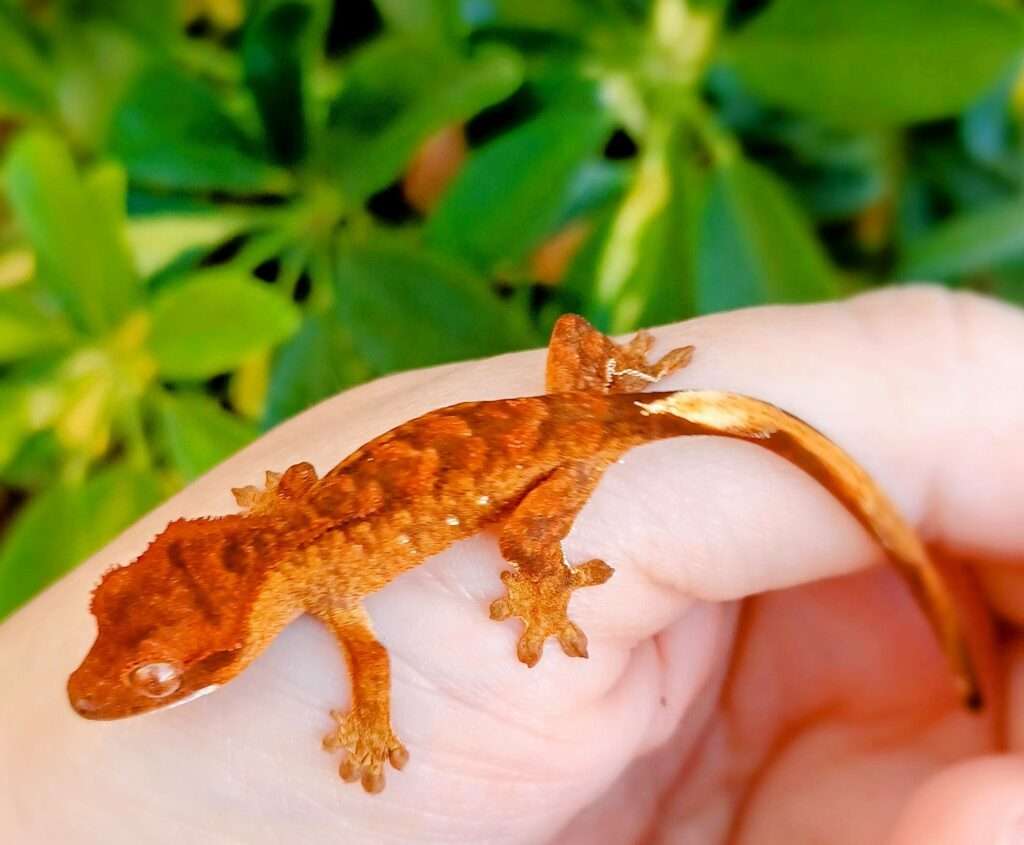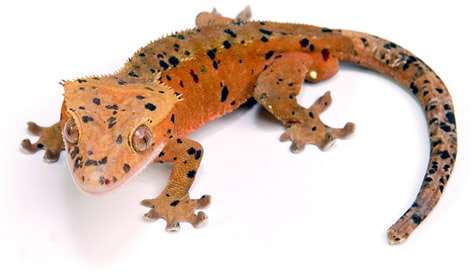
Description:
Scientific name: Sphaerodactylus argus
Life span: 10-20 years
A species of lizard belonging to the Sphaerodactylidae family is called Sphaerodactylus argus, also known as the ocellated sphaero, the ocellated gecko, and the stippled sphaero. The bodies of juveniles are dark brown. From the top of their head to the end of their reddish tail, bright lines run before disappearing. Ocelli, or circular eyelike markings, are present over the adult’s body and occasionally form periodic lines close to the head. Adults are a lighter shade of brown.
Native Region/Habitat
Only Jamaica is home to S. argus. Moreover, it can be found in the Bahamas, Yucatan Peninsula of Mexico, Cuba and nearby islets. Despite not being native to the Florida Keys, S. argus can be found there and has established populations.

Behavior:
Ocellated geckos are very agile climbers, as they can climb trees and walls. They are, however, shy creatures and retreat quickly in the sense of any danger. A mature male can be territorial and protect areas that are occupied by one or more females. When the juveniles are hatched, there is very little interaction between the offspring and their parents and they are left to fend for themselves. S. argus prefers to live in forests at heights between sea level and 100 m. (330 ft). It is a climbing species that inhabits walls and structures.
Care As a pet/In captivity:
Recommended Enclosure Size: Adults should be housed in a glass enclosure of 8x8x12 or 12x12x12, either alone or in couples. Adults of this species typically do not need to be upgraded to a larger enclosure because they do not grow to particularly large sizes. Sand-soil substrates or substrates made of coco fiber function nicely. With the help of isopods, springtails, and Bio Bedding, a bioactive substrate can be created. Maintain a gentle mist on the substrate. The substrate should be covered with a layer of leaf litter. Hides ought to be available; cork bark and related materials work well. Rocks, driftwood, cork bark, and manzanita branches can all be used as climbing aids. Moreover, live plants are a great accent.
Temperature: Ocellated geckos should be kept around 75–80 F. If steady temperatures are maintained, no heat source is required. Use a low power heat pad or bulb if a heat source is offered to avoid overheating. A digital thermometer should be used to measure temperature. Temperatures at night shouldn’t drop below 65 F. The need for UV light is debatable; if utilized, make sure the enclosure has adequate shade.
Humidity: Keep ocellated geckos dry, with a humidity level of 50 to 60 percent. To create humid microclimates, add plants. A digital hygrometer should be used to measure ambient humidity.
Ocellated geckos should be softly misted either daily or every other day to create dew on the walls of the enclosure and on the cage’s accessories, which they can drink from. Nevertheless, there should be enough air to allow the enclosure to dry up after a few hours. With routine misting, a shallow water dish is not necessary but can be offered.
Feeding: Feeds pinhead crickets and 1/8-inch crickets to the ocellated geckos it sells. Moreover, extra little black army fly larvae, melanogaster fruit flies, and springtails may periodically be fed to these youngsters. Adults should eat 1/8-inch crickets as a staple, but you can also give them bean beetles, melanogaster and hydei fruit flies, black soldier fly larvae, and dwarf white isopods. All feeder insects can be placed in a feeding dish after being gutloaded and coated with vitamin and mineral supplements.
Table





